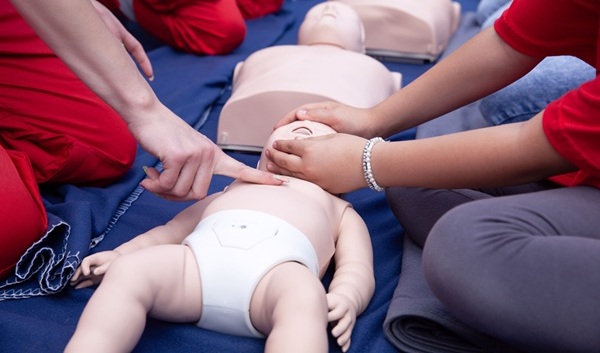Fitness Trackers Can Predict COVID-19 Infections, Suggests Landmark Study
|
By HospiMedica International staff writers Posted on 30 Oct 2020 |

Image: Fitness Trackers Can Predict COVID-19 Infections, Suggests Landmark Study (Photo courtesy of Scripps Research)
Data from the first six weeks of a landmark study has revealed that wearable devices like Fitbit are capable of identifying cases of COVID-19 by evaluating changes in heart rate, sleep and activity levels, along with self-reported symptom data - and can identify cases with greater success than looking at symptoms alone.
In March this year, researchers at the Scripps Research Translational Institute (Jupiter, FL, USA) launched the DETECT study that uses a mobile app to collect smartwatch and activity tracker data from consenting participants, and also gathers their self-reported symptoms and diagnostic test results. With data from the app, researchers can see when participants fall out of their normal range for sleep, activity level or resting heart rate; deviations from individual norms are a sign of viral illness or infection. To know if the illness causing those changes was COVID-19, the team reviewed data from those who reported developing symptoms and were tested for the novel coronavirus. Knowing the test results enabled them to pinpoint specific changes indicative of COVID-19 versus other illnesses.
For the study, the team used health data from fitness wearables and other devices to identify -with roughly 80% prediction accuracy - whether a person who reported symptoms was likely to have COVID-19. This is a significant improvement from other models that only evaluated self-reported symptoms. As of June 7, 30,529 individuals had enrolled in the study, out of which 3,811 reported symptoms, 54 tested positive for the coronavirus and 279 tested negative. More sleep and less activity than an individual's normal levels were significant factors in predicting coronavirus infection. The predictive model under development in DETECT might someday help public health officials spot coronavirus hotspots early. It also may encourage people who are potentially infected to immediately seek diagnostic testing and, if necessary, quarantine themselves to avoid spreading the virus. The researchers are now actively recruiting more participants for the study with a goal to enroll more than 100,000 people, which will help them improve their predictions of who will get sick, including those who are asymptomatic. In addition, the team plans to incorporate data from frontline essential workers who are at an especially high risk of infection.
"One of the greatest challenges in stopping COVID-19 from spreading is the ability to quickly identify, trace and isolate infected individuals," said Giorgio Quer, PhD, director of artificial intelligence at Scripps Research Translational Institute and first author of the study. "Early identification of those who are pre-symptomatic or even asymptomatic would be especially valuable, as people may potentially be even more infectious during this period. That's the ultimate goal."
Related Links:
The Scripps Research Translational Institute
In March this year, researchers at the Scripps Research Translational Institute (Jupiter, FL, USA) launched the DETECT study that uses a mobile app to collect smartwatch and activity tracker data from consenting participants, and also gathers their self-reported symptoms and diagnostic test results. With data from the app, researchers can see when participants fall out of their normal range for sleep, activity level or resting heart rate; deviations from individual norms are a sign of viral illness or infection. To know if the illness causing those changes was COVID-19, the team reviewed data from those who reported developing symptoms and were tested for the novel coronavirus. Knowing the test results enabled them to pinpoint specific changes indicative of COVID-19 versus other illnesses.
For the study, the team used health data from fitness wearables and other devices to identify -with roughly 80% prediction accuracy - whether a person who reported symptoms was likely to have COVID-19. This is a significant improvement from other models that only evaluated self-reported symptoms. As of June 7, 30,529 individuals had enrolled in the study, out of which 3,811 reported symptoms, 54 tested positive for the coronavirus and 279 tested negative. More sleep and less activity than an individual's normal levels were significant factors in predicting coronavirus infection. The predictive model under development in DETECT might someday help public health officials spot coronavirus hotspots early. It also may encourage people who are potentially infected to immediately seek diagnostic testing and, if necessary, quarantine themselves to avoid spreading the virus. The researchers are now actively recruiting more participants for the study with a goal to enroll more than 100,000 people, which will help them improve their predictions of who will get sick, including those who are asymptomatic. In addition, the team plans to incorporate data from frontline essential workers who are at an especially high risk of infection.
"One of the greatest challenges in stopping COVID-19 from spreading is the ability to quickly identify, trace and isolate infected individuals," said Giorgio Quer, PhD, director of artificial intelligence at Scripps Research Translational Institute and first author of the study. "Early identification of those who are pre-symptomatic or even asymptomatic would be especially valuable, as people may potentially be even more infectious during this period. That's the ultimate goal."
Related Links:
The Scripps Research Translational Institute
Latest COVID-19 News
- Low-Cost System Detects SARS-CoV-2 Virus in Hospital Air Using High-Tech Bubbles
- World's First Inhalable COVID-19 Vaccine Approved in China
- COVID-19 Vaccine Patch Fights SARS-CoV-2 Variants Better than Needles
- Blood Viscosity Testing Can Predict Risk of Death in Hospitalized COVID-19 Patients
- ‘Covid Computer’ Uses AI to Detect COVID-19 from Chest CT Scans
- MRI Lung-Imaging Technique Shows Cause of Long-COVID Symptoms
- Chest CT Scans of COVID-19 Patients Could Help Distinguish Between SARS-CoV-2 Variants
- Specialized MRI Detects Lung Abnormalities in Non-Hospitalized Long COVID Patients
- AI Algorithm Identifies Hospitalized Patients at Highest Risk of Dying From COVID-19
- Sweat Sensor Detects Key Biomarkers That Provide Early Warning of COVID-19 and Flu
- Study Assesses Impact of COVID-19 on Ventilation/Perfusion Scintigraphy
- CT Imaging Study Finds Vaccination Reduces Risk of COVID-19 Associated Pulmonary Embolism
- Third Day in Hospital a ‘Tipping Point’ in Severity of COVID-19 Pneumonia
- Longer Interval Between COVID-19 Vaccines Generates Up to Nine Times as Many Antibodies
- AI Model for Monitoring COVID-19 Predicts Mortality Within First 30 Days of Admission
- AI Predicts COVID Prognosis at Near-Expert Level Based Off CT Scans
Channels
Critical Care
view channel
CPR Guidelines Updated for Pediatric and Neonatal Emergency Care and Resuscitation
Cardiac arrest in infants and children remains a leading cause of pediatric emergencies, with more than 7,000 out-of-hospital and 20,000 in-hospital cardiac arrests occurring annually in the United States.... Read more
Ingestible Capsule Monitors Intestinal Inflammation
Acute mesenteric ischemia—a life-threatening condition caused by blocked blood flow to the intestines—remains difficult to diagnose early because its symptoms often mimic common digestive problems.... Read more
Wireless Implantable Sensor Enables Continuous Endoleak Monitoring
Endovascular aneurysm repair (EVAR) is a life-saving, minimally invasive treatment for abdominal aortic aneurysms—balloon-like bulges in the aorta that can rupture with fatal consequences.... Read more
Wearable Patch for Early Skin Cancer Detection to Reduce Unnecessary Biopsies
Skin cancer remains one of the most dangerous and common cancers worldwide, with early detection crucial for improving survival rates. Traditional diagnostic methods—visual inspections, imaging, and biopsies—can... Read moreSurgical Techniques
view channel
Robotic Assistant Delivers Ultra-Precision Injections with Rapid Setup Times
Age-related macular degeneration (AMD) is a leading cause of blindness worldwide, affecting nearly 200 million people, a figure expected to rise to 280 million by 2040. Current treatment involves doctors... Read more
Minimally Invasive Endoscopic Surgery Improves Severe Stroke Outcomes
Intracerebral hemorrhage, a type of stroke caused by bleeding deep within the brain, remains one of the most challenging neurological emergencies to treat. Accounting for about 15% of all strokes, it carries... Read morePatient Care
view channel
Revolutionary Automatic IV-Line Flushing Device to Enhance Infusion Care
More than 80% of in-hospital patients receive intravenous (IV) therapy. Every dose of IV medicine delivered in a small volume (<250 mL) infusion bag should be followed by subsequent flushing to ensure... Read more
VR Training Tool Combats Contamination of Portable Medical Equipment
Healthcare-associated infections (HAIs) impact one in every 31 patients, cause nearly 100,000 deaths each year, and cost USD 28.4 billion in direct medical expenses. Notably, up to 75% of these infections... Read more
Portable Biosensor Platform to Reduce Hospital-Acquired Infections
Approximately 4 million patients in the European Union acquire healthcare-associated infections (HAIs) or nosocomial infections each year, with around 37,000 deaths directly resulting from these infections,... Read moreFirst-Of-Its-Kind Portable Germicidal Light Technology Disinfects High-Touch Clinical Surfaces in Seconds
Reducing healthcare-acquired infections (HAIs) remains a pressing issue within global healthcare systems. In the United States alone, 1.7 million patients contract HAIs annually, leading to approximately... Read moreHealth IT
view channel
Printable Molecule-Selective Nanoparticles Enable Mass Production of Wearable Biosensors
The future of medicine is likely to focus on the personalization of healthcare—understanding exactly what an individual requires and delivering the appropriate combination of nutrients, metabolites, and... Read moreBusiness
view channel
Philips and Masimo Partner to Advance Patient Monitoring Measurement Technologies
Royal Philips (Amsterdam, Netherlands) and Masimo (Irvine, California, USA) have renewed their multi-year strategic collaboration, combining Philips’ expertise in patient monitoring with Masimo’s noninvasive... Read more
B. Braun Acquires Digital Microsurgery Company True Digital Surgery
The high-end microsurgery market in neurosurgery, spine, and ENT is undergoing a significant transformation. Traditional analog microscopes are giving way to digital exoscopes, which provide improved visualization,... Read more
CMEF 2025 to Promote Holistic and High-Quality Development of Medical and Health Industry
The 92nd China International Medical Equipment Fair (CMEF 2025) Autumn Exhibition is scheduled to be held from September 26 to 29 at the China Import and Export Fair Complex (Canton Fair Complex) in Guangzhou.... Read more















